Last Monday (9 September 2013), the police officer on morning duty at Isla Colón International Airport, Panama noticed some foreigners loading crates with what appeared to be animals on a private jet. Finding this suspicious, he alerted his supervisor. Within minutes the local police chief, the mayor of Bocas, the director of the regional office of the National Environmental Authority (ANAM), community leaders and heads of local conservation organizations were informed about the incident. Little by little, a crowd of concerned citizens from Bocas town gathered around what turned out to be eight pygmy sloths – some of the rarest mammals on Earth.
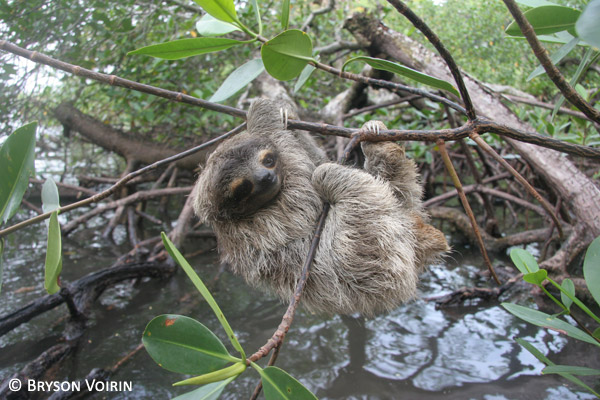

The pygmy three-toed sloth (Bradypus pygmaeus) is one of the world’s most endangered species. A recent scientific survey found fewer than 100 sloths hanging on in their island home – Isla Escudo de Veraguas, Panama. They live nowhere else in the world. For the past 15 months, Bryson Voirin, expert on pygmy sloths and member of the International Union for Conservation of Nature (IUCN) Species Survival Commission, has been tracking ten of them with radio-collars to find where on the island they spend their time. Voirin has been working on sloth conservation in Panama for the last 10 years alongside scientists from Zoological Society London, Smithsonian Tropical Research Institute and many local organizations.
But on Monday, as the drama at the airport was developing, it became clear that the foreigners who were trying to export the pygmy sloths were Luis Sigler and Daryl Richardson of Dallas World Aquarium, Jason and Julia Heckathorn – children’s books publishers and amateur naturalists based in the U.S., and Judy Arroyo and Rebecca Cliffe from a sloth rehabilitation center in Costa Rica.
According to the flight manifest, the charter flight was headed for Island Roatan in Honduras before its final destination: Addison airport, Dallas. None of the passengers wanted to comment about the reason for this interim destination.

According to Sigler, the conservation biologist on staff at the Dallas Aquarium, the rare animals were being relocated in order to establish a captive breeding population in Texas. Sigler presented to the airport officials a research permit, animal export permit and a veterinary certification – all the required paperwork for the export. The National Environmental Authority (ANAM) in Panama City has since confirmed their legitimacy.
The Dallas Aquarium local partner in Panama was Jacobo Lacs, director of Zoologico del Istmo in Colon – also a private animal center, closed to the public, where tropical birds and other animals are bred for export. According to the research permit, Lacs was supposed to take two of the eight pygmy sloths to his facility.
However, as the regional ANAM office had no knowledge of the foreign conservation project, the local authorities, aided by a crowd of 75-100 impromptu protestors, vigorously insisted that the sloths be returned to their native habitat on Isla Escudo de Veraguas.
By Monday evening, Dallas Aquarium officials had relinquished possession of the eight sloths. The animals were to be taken back to the island on Tuesday morning and released into the mangrove forest.

The local protesters, however, were distrustful and so the agreement was made that two local citizens would spend the night camped out by the sloths’ temporary holding enclosure in order to ensure they were not removed from the country before they could be returned to Isla Escudo de Veraguas the next morning.
Even though the eight pygmy sloths are back in their home, all is far from over.
“We are really worried,” a local resident, who asked to remain anonymous, told mongabay.com. “They said they were going to come back and this time we wouldn’t be able to stop them. We think they plan to ship them out via David City, at the Pacific side of Panama.”
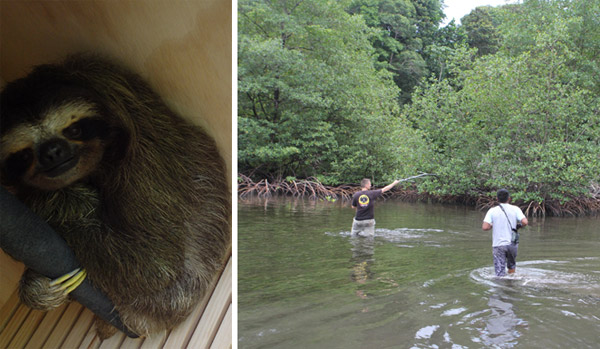
Potential captive breeding
Breeding programs for some threatened species have been successful. However, three-toed sloths are very difficult to maintain in captivity. They often do not survive, nor reproduce. For years, many have tried to maintain them artificially outside the Tropics, and nearly all of them have failed. There is little to no experiences with keeping, breeding and feeding three-toed sloths in captivity.
“A modern and serious zoo should never bring wild animals in without knowing this basic information. As studbook keeper for two-toed sloths in Europe I can say that because of ignorance and lack of experiences from zoos, a lot of sloths paid with their lives in the past,” says Dr. Jutta Heuer, from Halle Zoo, Germany, one of the world experts in sloth husbandry in Europe.
Recently, the Dallas World Aquarium has been able to maintain a small population of three brown-throated three-toed sloth (Bradypus variegatus) – another sloth species that is not endangered – by providing fresh Cecropia leaves to them flown in from Hawaii. But these three animals are the only ones which survived out of the nine sloths Dallas Aquarium imported from Venezuela and Costa Rica in the past 15 years. The only baby sloth born in captivity died 7 months later and had been conceived in the wild.

To make matters worse, the critically endangered pygmy sloths themselves have never been held and bred in captivity. Even their actual diet is unknown. They are thought to eat primarily red mangroves from the coast, but the radio collar study found pygmy sloths on the interior of the island in deep forest, suggesting that other trees make up at least a portion of their diet.
“The idea of an external breeding program to increase the number of pygmy sloths sounds logical and noble at first, but when you consider that it’s hard enough to just keep common three-toed sloths alive in captivity, let alone breed them, it seems highly unlikely that a satellite breeding population in Dallas would have yielded anything more than at best a few sloths surviving in captivity in a foreign zoo, but more likely eight fewer surviving pygmy sloths in the wild. The potential risks at this time do not justify the means. Promising the local community that by removing a few sloths from the island they will eventually benefit by receiving multiple captive-bred replacements is a fantasy at this point,” says Voirin.

The secrecy
All professionals from the international sloth conservation community contacted by mongabay.com were caught by surprise by the drastic actions undertaken by Dallas World Aquarium.
“I have formerly worked with the New Zealand Wildlife Service on some of the most endangered species in the world, which often involved capture of wild animals for transfer to other reserves or captive breeding. There is no way any kind of captive program for the sloths should have been established or even considered without a comprehensive management plan developed in consultation with experts on the species as well as with all relevant stakeholders. A serious conservation organization should never have undertaken this kind of project without further research and consultation with independent experts,” said Dr. George Angehr from the Smithsonian Tropical Research Institute.
“I fail to understand why Dallas World Aquarium did not consult with the experienced researchers prior to exporting these animals. Furthermore, I fail to understand how ANAM approved the export of roughly 10% of the wild population if this species has never been kept in captive conditions,” said Dr Mariella Superina, Chair of the IUCN/SC Anteater, Sloth and Armadillo Specialist Group.
Sigler explains that “a document called Isla Escudo de Veraguas: a Vision for the Future, on page 16, Section 6.1 Project Scorecard showed the proposed participation of actors.”

This document was supposed to have been publicly shared for comments and sent electronically to all stakeholders more than a year ago. But it is not available online and apparently the only conservation organization it was emailed to (in January 2013) was the Zoological Society of London (ZSL), which promptly responded that “the current draft raises a number of questions and concerns”.
The most suspicious thing about this conservation plan-type document is that it was drafted not by any particular conservation organization (not either by the Dallas Aquarium). Instead, it was put together and emailed around by Jason and Julia Heckathorn – the children’s books authors and amateur naturalists, who were also present at the airport last Monday for the attempted pygmy sloth exportation.
The Dallas aquarium refused further explanations as to what kind of working relationship they had with the animal-loving couple.
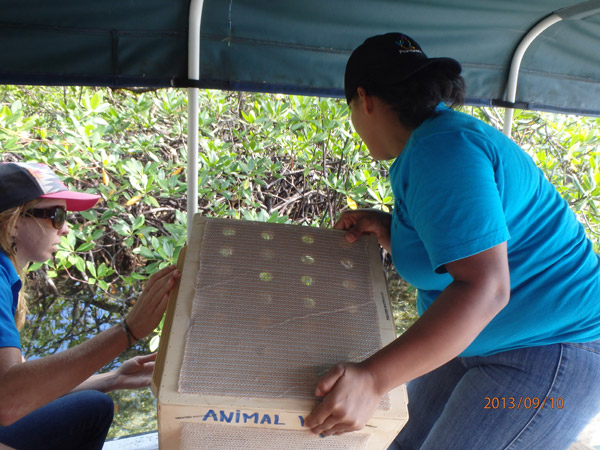
In the meantime, Silvano Vergara, the head of ANAM in Panama city gave an interview for local TV in which he said: “The agreement with Dallas Aquarium foresaw since 2007 that they would do research, and after doing studying the behavior, reproduction of each of these individuals, see how they could be reproduced in captivity. Precisely, they were going to export three pairs to reproduce them in captivity, and then bring back the animals and introduce them.”
Back in Bocas, nobody (including the local ANAM officer) had heard about this newly surfaced agreement with Dallas until the incident at the airport last Monday. People were upset that nobody consulted them on a matter as important as the fate of the few remaining pygmy sloths in the wild.
“If we want to protect this great species successfully we need to work openly together. We shouldn’t learn about a conservation effort relating to the pygmy sloths in the middle of the night amidst violent social unrest,” says Voirin.

Legislation loophole
Although the IUCN Red List classifies the pygmy sloth as Critically Endangered, the Convention on International Trade in Endangered Species (CITES) has not yet been updated to include the recently described species. Pygmy sloths have been known to science only since 2001 when they were formally described as a separate species, occurring only on Isla Escudo de Veraguas. This is why the Aquarium (or anyone else) needs no import permit from the U.S. federal government. They need only Panamanian export permits, which are often easily obtained.
“The leaders of this effort have exploited the oversight: no one ever anticipated that there would be trafficking of pygmy sloths out of the country,” says Voirin.
An effort is underway since last week to have Panama immediately request that the pygmy sloths be listed as a CITES protected species.
All aspects of the incident are still under active investigation in Panama.
Videos of the release shot by Shannon Thomas
This article was written by Tanya Dimitrova for Mongabay.com





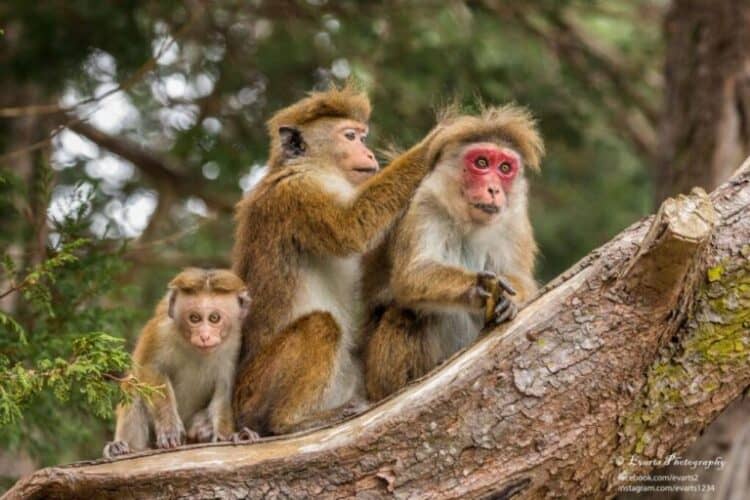
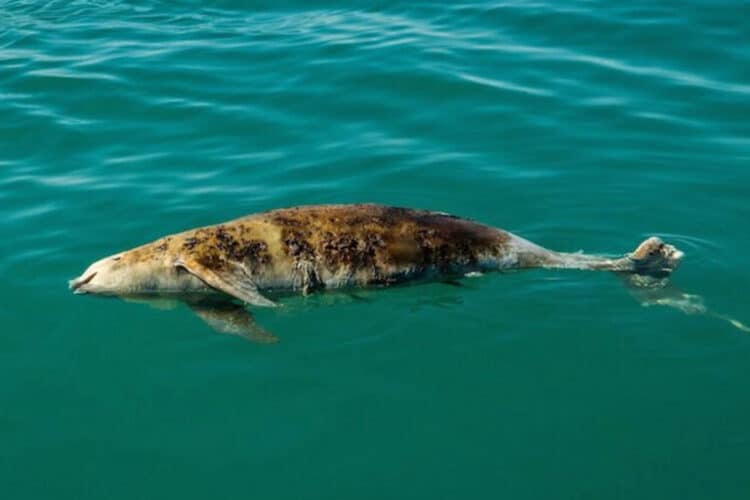
Leave a Reply